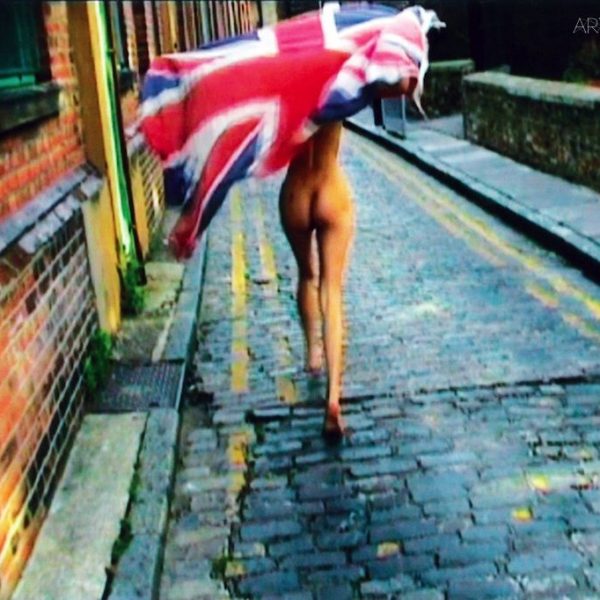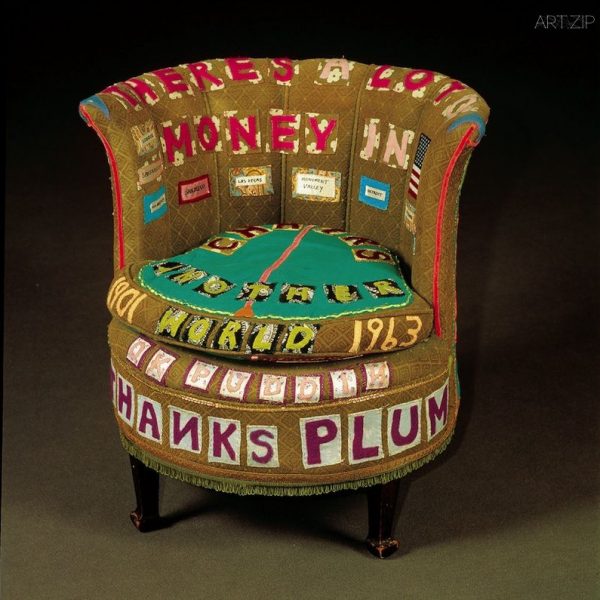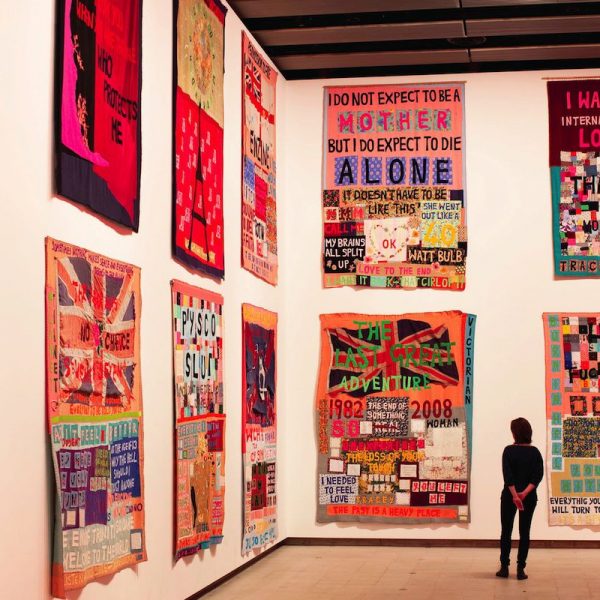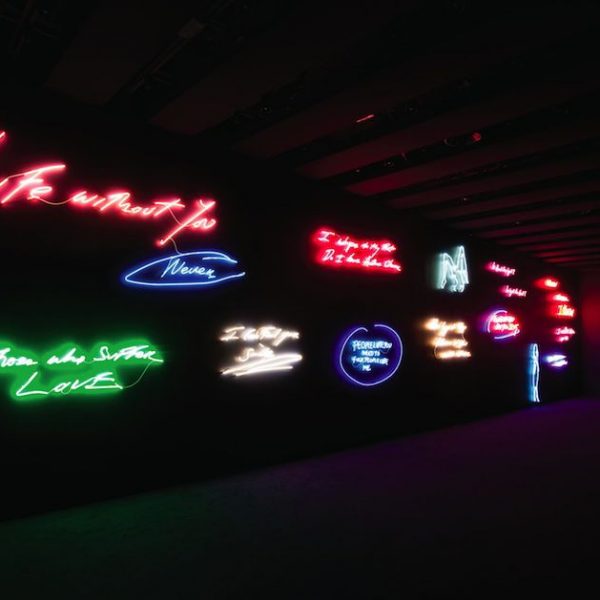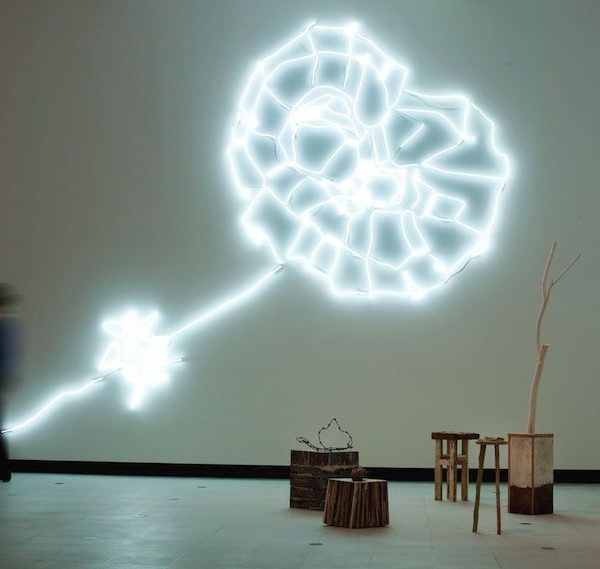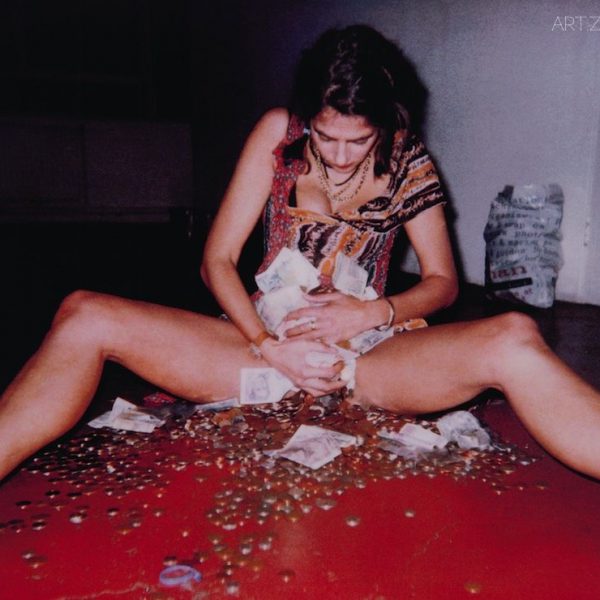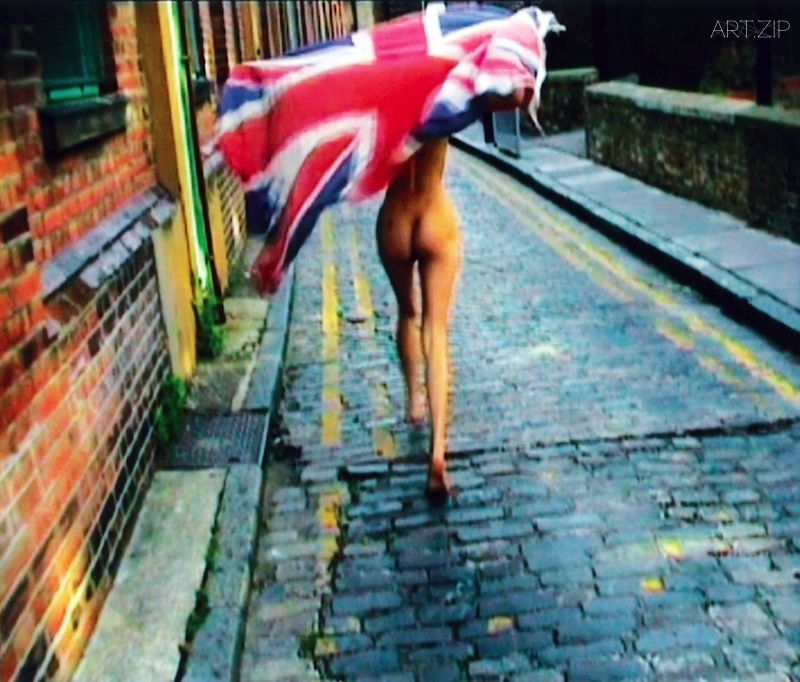
This year the Hayward Gallery is celebrating its 60th anniversary by holding a retrospective exhibition of the internationally acclaimed celebrity-artist Tracey Emin, titled ‘Love is What You Want’. Tracey Emin is arguably the most controversial artist from the YBA (Young British Artists) and has made a career out of her outspoken feminist attitude. Being one of the most notorious figures in the contemporary art scene, she has became somewhat of a household name due to the publicity received from her exposure in television, newspaper and radio. She is now considered to be the only female artist in history to achieve such celebrity status.
Since Ralph Rugoff has been appointed as a director of the Hayward Gallery, it has been turning out some of the most experimental and thought provoking exhibitions London has ever seen. With most of their exhibitions offering interactive elements to the audience, it becomes an experience one has to go through in order to truly understand the piece of work. The pieces themselves become somewhat of a spectacle rather than just objects appearing before the viewers. Similarly with the Tracey Emin retrospective, the idea is to take us on a journey through the melodramatic and theatrical life of Emin. After nearly an hour spent in the exhibition I cannot say that I have taken anything remotely interesting away from it, other than slight annoyance.
In the introduction to the exhibition, Hayward Gallery states, ‘This major survey exhibition covers every period of her career, revealing facets of the artist and her work that are often overlooked.’ The Gallery has included everything from videos, drawings, paintings, neon light installations and recent large sculptures. Most of which are presented to give a better understanding to Emin’s life, because without having any background knowledge one would find it very hard to understand her work.
It is a one sided argument Emin has put forward here. I cannot help but think it’s very arrogant of her to presume anyone will be so interested in her complete journey that she can now work with the presumption that the viewer holds this knowledge. Some could say that the creations are for her personal exploration and the fame is a side product of this, yet the media chosen and the creative approach hint at an interest in the exhibition of the final product, which implies an active disregard for accessibility.
Emin’s success as a female artist largely depends on her female audience, mainly young teenagers. She uses the desire of the female nature to understand itself to keep them coming back. They might find her works relatable to their own lives in some ways but beneath the shock there is little substance.
今年倫敦的海沃德畫廊(Hayward Gallery)為國際知名藝術家翠西 · 艾敏 (Tracey Emin)舉辦了一場名為 “愛是你所求(Love is What You Want)” 的回顧展來作為其60週年建館慶典。翠西可以說是在 YBA (Young British Artist)裡最具爭議性的藝術家,而她直言不諱的女性主義態度成為其藝術 生涯的重要標誌。作為當代藝術界最為人熟知的人物之一,翠西在電視、 報紙以及電臺裡的頻繁曝光使其成為家喻户晓的人物,她是至今歷史上唯 一一位女性藝術家獲得如此高的知名度。
自海沃德畫廊任命拉爾夫 · 羅奧夫(Ralph Rugoff)為新館長以後,畫廊舉 辦了一些倫敦史上最具實驗性、最引人深思的展覽,其中很多展覽包含大 量互動元素,觀眾不得不通過與作品進行互動來瞭解作品,較之呈現在觀 眾面前的那些展品,其交互現場本身更成為一大看點。艾敏的回顧展正是 一例,它將觀眾帶進藝術家極具戲劇性的生活旅程。而在一小時的觀展之 後,我並沒有感到不安,但又未能從中發現任何有趣的東西。
在展覽的介紹中海沃德畫廊是這麼寫的:“該展貫穿了藝術家職業生涯的每 一時期,呈現了藝術家生活的方方面面乃至其被忽略的作品。”展覽包括視 頻、圖片、繪畫、霓虹裝置及藝術家近期製作的大型雕塑,這些作品試圖 為了讓觀者更好地了解艾敏的生活,因為如果沒有這些作為背景知識,她 的作品將很難被觀者理解。
我在這裡提出的只是一己之見,我不得不說艾敏有些過於自負地認為人們 會對她整個生活旅程感興趣,至少她是這麼認為的。可能有些人會認為這 些創作是她的個人探索歷程,成名也只是副產品而已。但我認為艾敏對於 媒介的選擇和創作方式體現了最終作品呈現的某種趣味,但也讓我隱約感 受到她是故意忽略觀者對作品理解的難易度。
艾敏之所以成功在很大程度上是其女性藝術家的身份讓她擁有了很大一部 分女性觀眾,其中以青少年為主。她利用女性天生的情慾讓觀眾一次又一次關注作品。她們可能發現艾敏的作品跟她們的 一些生活經歷有所契合,但其實那些令人震撼的 作品背後卻沒有多少實質內容。
Emin is an expressionist at heart, you can find uses of imagery from Edvard Munch, Frida Kahlo and Egon Schiele in the exhibition, something the Hayward have done intentionally to try and help the viewer understand her work. Yet this is not enough of a helping hand and the process of having to learn Emin’s life’s story becomes overwhelmingly frustrating. Perhaps this defines what it is to hold celebrity status.
Hayward opened the show with a larger than life display of Emin’s most notorious work ‒ the Blankets. Emin sewed her life experience onto these colourful, bold, attention-grabbing appliqué blankets with great effect. On one of them she talks about living above a Kentucky Fried Chicken shop, she states, ‘Whenever I see the sign KFC and Colonel Saunders I always think of home.’ This innocent and exposed sentiment bring a child like quality to her blankets, and together with the associations with quilts, Emin suggests these works are her own personal security blankets. These works are brilliant and humorous, however, there is only a handful of works in the exhibition can keep up with that standard.
Abortion, sex, masturbation and rape are all re-occurring themes in Emin’s work yet the retrospective of the approaching 50’s artist is to some extent a career suicide for her. The exhibition highlights what happens after the initial shock tactic has worn off. What is left, in the form of her recent sculptural works ‘Somewhere Else’ (2011), leaves one cold.
‘Those Who Suffer Love’ (2009) is an animation comprised of around 200 drawings of a woman masturbating, off-set by a sensitive and detailed image of the vagina in thread on the adjacent wall. Emin’s comment on the work was, ‘Even though it is an erotic subject, I felt distant from the sexuality of the pictures. It was almost like I was trying to understand something ‒ what it means to be a woman, a single entity and feminine.’ After a whole career dedicated to ‘what it means to be a woman’, with no real revelations in her career on the subject, I find her motives questionable. Emin comes across more like a self obsessed, drama queen who is willing to do anything for publicity.
One of the more delightful works in the exhibition was ‘Why I Never Became A Dancer’ (1995). Emin was narrating her story over faded images of Margate and the seafront; she describes her public humiliation by a group of local lads at a dance competition when she was fifteen. The film climaxes with her celebratory realisation that ‘I’m better off than all of them. I’m FREE’, as she dances to Sylvester’s ‘You Make Me Feel (Mighty Real)’. The work is humorous and doesn’t have the same showy quality to it as her later attempts. Yet again it has the same subject matter as all of her other works ‒ Tracey Emin, and because of this repetition it felt more honest not like her later work than to try and find anything of interest within her endless pursuit.
With the backlash against conceptual art and the YBA, artists now strive to be more articulate and calculated with their work to avoid the pitfall of being conceptual artists. Especially with the current economical situation, people almost want to know where their investment is going exactly, they want to see art with a clear thought process. Now that all Tracey Emin’s life is on display at the Hayward Gallery, I cannot help but think where can she goes next? It was exhausting enough having to go through all the works on display on both floors of the gallery. Undoubtedly she is a very clever businesswoman, and although her work might not have been of interest to me, her contribution to British Art is creditable. And no matter how you feel about the YBA, the intensity of the movement can do nothing but cause an interesting reaction.
艾敏其實是一位表現主義者,你能在展覽中發現 她對愛德華 · 蒙克(Edvard Munch)、費達 · 卡羅 (Frida Kahlo)、艾貢 · 席勒(Egon Schiele)這 些藝術家作品的意象化運用,畫廊有意地試圖引 導觀眾更好地理解艾敏的作品。可惜成效甚微, 要了解艾敏的故事對於觀眾來說還是不容易的。 或者這就是艾敏如何保持名人姿態的手法吧。
畫廊以艾敏最廣為人知的大型作品“毛毯(the Blankets)”拉開展覽的序幕。艾敏通過這些色彩 斑斕的、醒目的、吸引眼球的地毯作品訴說著自 己的生活經歷,而其中一張地毯艾敏談到她感到 親切不過的肯德基炸雞店,她說:“看到肯德基標 誌和桑德斯上校,我總想起家來。”這種純真情感 的表達賦予了毛毯孩子般的真摯,加上毛毯讓人 容易聯想到被子,所以艾敏說這些作品讓她覺得 很有安全感。這些作品很贊而且有幽默感,但是 在整个展覽里有這樣水平的作品就屈指可数了。
在艾敏的作品中,人工流產、性、自慰、強姦這 些都是反覆出現的主題。但對於將近50歲的藝術 家來說,這種回顧在某種程度上說不免是自毀前 程的。展覽想要帶給觀眾的這種心靈震撼卻隨著 作品的深入探索而慢慢消失,譬如她比較近期的 雕塑作品“在別處(Somewhere Else)2011”就索 然無味了。
艾敏的一個動畫作品叫“那些被愛折磨的人 (Those Who Suffer Love)2009”由200幅女人 自慰的圖片組成,放映機將這些敏感而具體的女 性陰部描寫圖片投到牆上並進行快速放映。艾敏 是這麼評說自己這個作品的:“雖然這個主題是 色情的,但是我從這些圖片一點都感覺不到情色 的存在。我是嘗試通過這樣的主題去理解作為一 個女人,一個獨立個體,一位女性,這些究竟意 味著什麼。”艾敏的整個藝術生涯都想要探索“到 底作為女人意味著什麼”,但是她的作品主體卻 沒有什麼真正的相關性,因此我不免對她的目的 產生質疑。她更像是一個自戀狂,樂於為了引起 公眾注意而做任何事的Drama Queen(某種程 度上可以說是有嘩眾取寵傾向的,愛把事情戲劇 化的人)。
展覽中一些較為愉悅的作品之一要算是“為什麼我成不了舞者(Why I Never Became A Dancer)1995”。艾敏通過一些逐漸模糊直至消失 的馬蓋特(英國一海濱小鎮)和海邊圖片來講述自己15歲時在一舞蹈 比賽中被一群當地小伙羞辱的故事。影片的高潮是當她在西爾維斯特 (Sylvester)的歌曲聲中“你讓我如此真實(You Make Me Feel ’Mighty Real‘ )”翩翩起舞,並興高采烈地意識到“我比他們所有人都跳得好。我 是自由的。”這個作品是詼諧的,也沒有她後期作品那種作秀的痕跡。 即使這個主題還是圍繞她自己,其他作品也是不停地重復這個主題, 但這個作品顯得更為真摯,而不是在無止境的探索中發掘有意思的事。
隨著人們對於觀念藝術和YBA藝術家的強烈反對,藝術家們現在追求 更精準的表達方式,儘量避開作為觀念藝術家的困境。尤其在當前的 經濟形勢下,人們幾乎都想知道自己投資的確切流向,同樣,他們也 希望看到藝術作品呈現清晰的思考過程。現在艾敏的所有生活都呈現 在海沃德畫廊,我不禁思考她下一步將怎麼做了。現在看完並消化她 滿滿兩層的作品已經足夠疲憊了。但毋庸置疑的是,她的確是一個非 常聰明的女商人,儘管她的作品對我來說並沒有太大吸引力,但她對 整個英國藝術的貢獻還是不容置疑和值得肯定的。無論你是怎樣看 待YBA,這個運動的影響之大就算做不了什麼但也引起足够有趣的 反響了。

